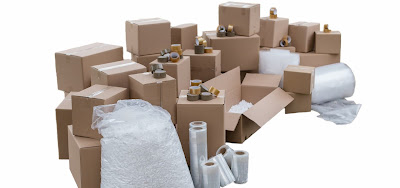Introduction:
Protective packaging is a type of packaging that is designed
to protect products during transportation and handling. It plays a crucial role
in ensuring that products reach their destination in good condition without
being damaged or compromised in any way.
Types of protective packaging material
Many various kinds of protective packaging materials, such
as bubble wrap, foam sheets, foam-in-place, corrugated cardboard, and molded
pulp, are frequently utilized. Each of these materials has a certain set of
qualities that make it appropriate for covering particular objects.
·
Bubble wrap is a popular choice for protective
packaging because it is lightweight, flexible, and provides a good cushioning
effect. It is made of a thin plastic film that is coated with a layer of small,
air-filled bubbles. The bubbles help to absorb shock and protect the product
from impact during handling and transportation.
·
Foam sheets and foam-in-place are also commonly
used for protective packaging. Foam sheets are sheets of foam that are cut to
fit the shape of the product being protected. Foam-in-place is a type of
packaging material that is created on-site by injecting foam material into a
mold. Both foam sheets and foam-in-place provide excellent cushioning and can
be custom-fit to the shape of the product being protected.
·
Corrugated cardboard is another popular choice
for protective packaging. It is made of three layers of paper - a wavy inner
layer sandwiched between two flat outer layers. The wavy inner layer provides
extra strength and durability, making corrugated cardboard an excellent choice
for protecting heavier or more fragile products.
·
Molded pulp is a type of protective packaging
that is made from recycled paper products. It is created by molding the paper
into a desired shape and then drying it to form a sturdy, rigid package. Molded
pulp is an eco-friendly alternative to other types of the protective packaging and
is often used for protecting products that are not too heavy or fragile.
Conclusion
In conclusion, protective packaging is an essential
element of the transportation and handling of products. It helps ensure that
products reach their destination in good condition without damage or compromise.
Therefore, selecting the suitable material for the particular requirements of
the product being protected out of the various types of protective packaging
materials available, each with a distinct set of features, is critical. If you
want to buy them at affordable rates, visit britwrap.com.

Comments
Post a Comment